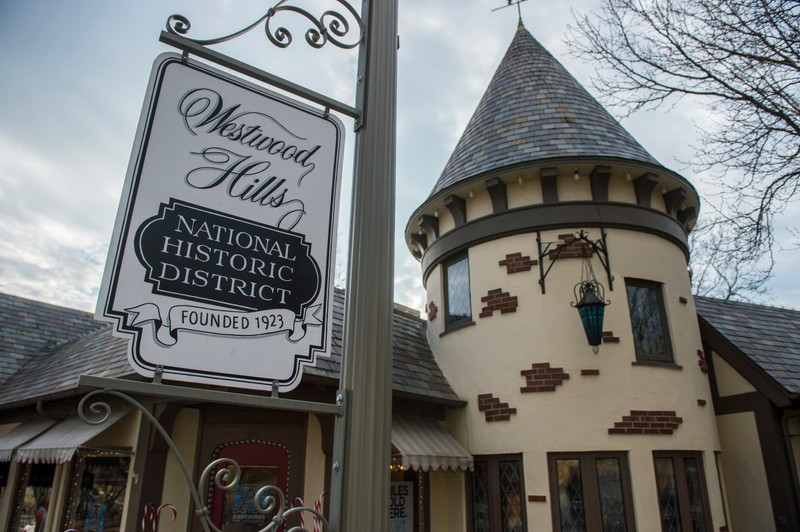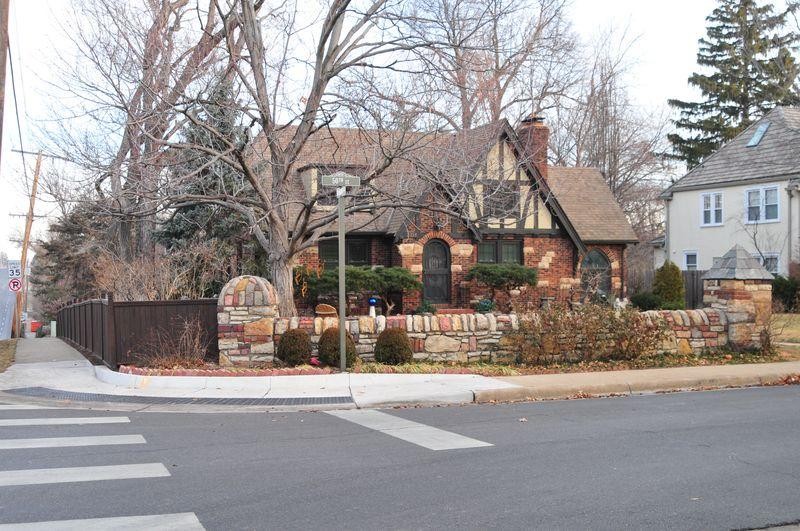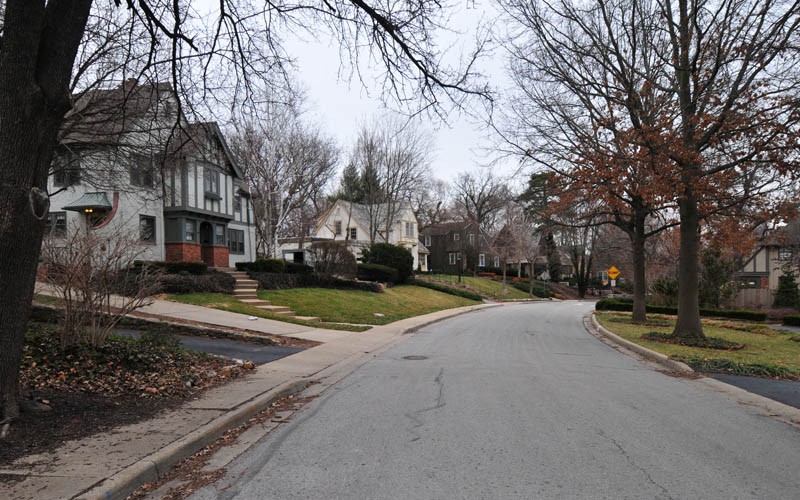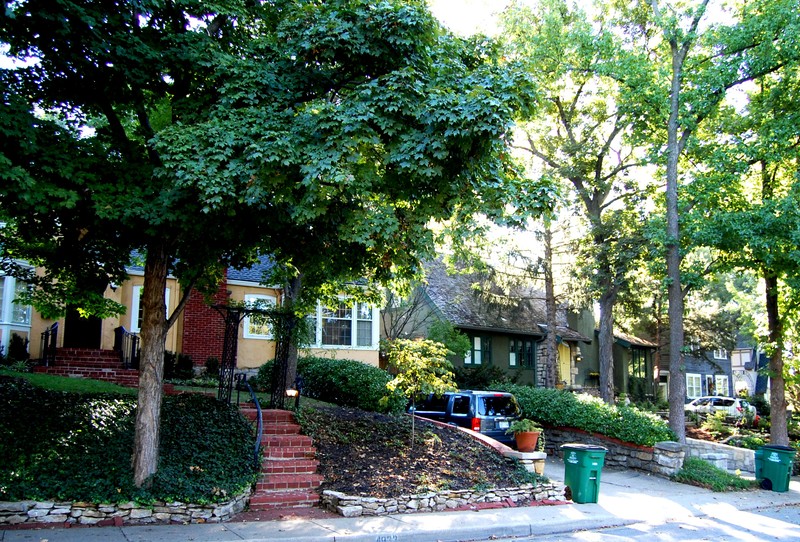Westwood Hills Historic District
Introduction
Text-to-speech Audio
Influential Kansas City developer J.C. Nichols platted the Westwood Hills subdivision in 1923 and his company established the Westwood Hills Homes Association in 1926. The first home in the community was designed by Alice Walton, one of several leading female architects in Kansas City. Westwood Hills Historic District is unique in that it is both a large, well-planned subdivision comprised of more than 250 buildings and an independent town. The planning of this residential community began in the 1920s, and the town's incorporation was completed in 1949 in response to homeowners who did not want to be annexed into the surrounding city. Westwood Hills was added to the National Register of Historic Places in 2013, and the community reflects elements of urban planning and developed in phases as homes were designed by numerous architects.
Images
Westwood Hills Historic District

Westwood Hills Historic District

Westwood Hills Historic District

Westwood Hills Historic District

Backstory and Context
Text-to-speech Audio
This unique community reflects the rise of the automobile during the 1920s as these homes were not located near a streetcar line and included driveways and garages, a feature that made this development unique from many others in the city at that time. The 255 historic properties within the Westwood Hills Historic District also comprise the entire city of Westwood Hills in Johnson County, Kansas. The collection of homes, which first emerged during the 1920s, speaks to stages of the district's development as the town evolved from pastureland to a residential subdivision to a city. The J.C. Nichols Company platted the Westwood Hills subdivision in 1923 and established the Westwood Hills Homes Association in 1926; Westwood Hills was incorporated in 1949.
Westwood Hills, located in northeast Johnson County, was previously part of the Shawnee Reservation after the tribe reluctantly accepted a deal from the U.S. government to leave Ohio in 1825. President James Buchanan opened Kansas to non-Indian settlement in 1854, resulting in the U.S. taking back the vast majority of the 1.6 million acres of land previously promised to the Shawnee Nation. It is important to note that other tribes previously occupied and identified with these lands and some settlers of non-Native origin had been establishing settlements in Shawnee territory along with many traveling through Shawnee territory on the westward trail system established during the 1830s and 1840s.
After 1854, the U.S. government established a new treaty with the Shawnees, awarding 200 acres to each tribe member and 1,290 acres to the Chief of the Shawnee, Joseph Parks. When Parks died in 1859, his granddaughter Catherine Swatzel inherited a portion of Parks' land. J.C. Nichols of the J.C. Nichols Investment Company purchased nearly forty acres of land from the Swatzel family in 1922 and filed a plan for the Westwood Hills subdivision in 1923, his second residential development in Kansas.
The Westwood Hills Historic District encompasses a planned residential development with winding streets that curve with the naturally hilly topography, along with high-quality residential construction. The community is led by a homeowners' association and includes a small commercial area designed to serve its residents. Although Nichols had developed other residential areas, including one in Kansas, Westwood was the first to include a commercial space, a feature that would become a trademark of his later residential development projects. The Nichols Company also organized the services and utilities such as water and sewer lines and postal services, becoming one of the first builders to incorporate them into expansive residential developments. Nichols also stood as one of the first residential developers to recognize the increasing influence of the automobile, and the planning of this community demonstrates the transition in residential development away from railways and trolleys. Whereas early twentieth-century residential communities featured shared alleys bisecting the center of each block to access separate carriage houses, Nichols designed subdivisions to have individual driveways connecting streets to private garages.
The bulk of the home construction in Westwood took place during two building booms. Eighty-two houses and two commercial buildings were constructed between 1923 and 1931. After a pause in construction, the erection of fifty-three homes took place between 1936 and 1943. However, home construction continued until the last home was built in 1987. In 1925, the Nichols Company started building the Westwood Hills Shops. Although most viewed the intermingling of commercial and residential buildings negatively, Nichols strategically planned his commercial developments to concentrate in one area, preferably on a primary road. A grocery store, pharmacy, beauty and barber shops, and a dry cleaner comprised Westwood's first commercial tenants. The retail section provided convenience for area residents rather than serving as a recreational shopping destination.
As the county grew increasingly crowded with residential and commercial developments, subdivision communities explored options to retain autonomy and separate identities, notably when faced with potential annexations. Homeowner associations routinely petitioned the government to incorporate as individual municipalities, including Westwood Hills, which became a city in 1949. Westwood Hills residents had Kansas City, Missouri postal addresses until 1960, when the Shawnee Mission Post Office opened.
The varying home styles, influenced by each period for which they were built, give the historic district the appearance of organic growth despite existing as part of one 1920s-planned subdivision. J.C. Nichols' sales associates accompanied prospective buyers to the site to choose their lots. Ida Carter purchased the first lot, but sold it before construction began. In 1923, Charles L. Ward, owner of a successful electrical supply company, commissioned one of Kansas City's prominent female architects, Alice Walton, to design a Tudor Revival dwelling for him at 4910 Glendale, serving as the first house to begin construction in Westwood Hills. The homes constructed during the 1920s and 1930s targeted the middle and upper-middle class, usually designed in historical Revival styles such as the Tudor Revival, French Eclectic, and Colonial Revival. By the mid-twentieth century, the Modern Movement supplanted historical Revival styles, and the homes in Westwood reflect that trend.
The large subdivision-city arose during the 1920s when the automobile displaced the railway as the primary mode of transportation for middle- and upper-middle-class workers and business owners. The community plan also included utility development and retail services, mimicking the platting of a city which was a feature that supported Westwood Hills' successful application to be incorporated as a city in 1949. The varying styles in homes give the historic district the appearance of an organically grown town, but Westwood Historic District is also one of the earliest examples of a planned residential community targeted towards those who possessed both financial independence and an automobile.
Sources
Johnson County Museum. "Westwood Hills nominated to Kansas State Register of Historic Places." Johnson County History Blog. September 30, 2013. https://jocohistory.wordpress.com/2013/09/30/westwood-hills-nominated-to-kansas-state-register-of-historic-places/.
Nugent, Rachel, Elizabeth Rosin and Rebecca Reese. "Registration Form: Westwood Hills Historic District." National Register of Historic Places. kshs.org. 2013. https://www.kshs.org/resource/national_register/nominationsNRDB/Johnson_WestwoodHillsHistoricDistrictNR.pdf.
Discover Kansas City Homes. https://www.discoverkchomes.com/westwood-hills/
kansasgis.org. https://khri.kansasgis.org/displayImage.cfm?file=091-3540_9.JPG&cap=Westwood%20Hills%20Historic%20District%2E%20W%2E%2050th%20Street%20north%20corner%20marker%2C%20non%2Dcontributing%20object%20%28%23188%29%2C%20view%20NE%2E%2003%2F2013%2E%20Finch%2C%20Brad%2E
Rosin Preservation. https://rosinpreservation.com/portfolio_page/westwood-hills-historic-district/
JOCO History, Johnson County Museum blog. https://jocohistory.wordpress.com/2013/09/30/westwood-hills-nominated-to-kansas-state-register-of-historic-places/
